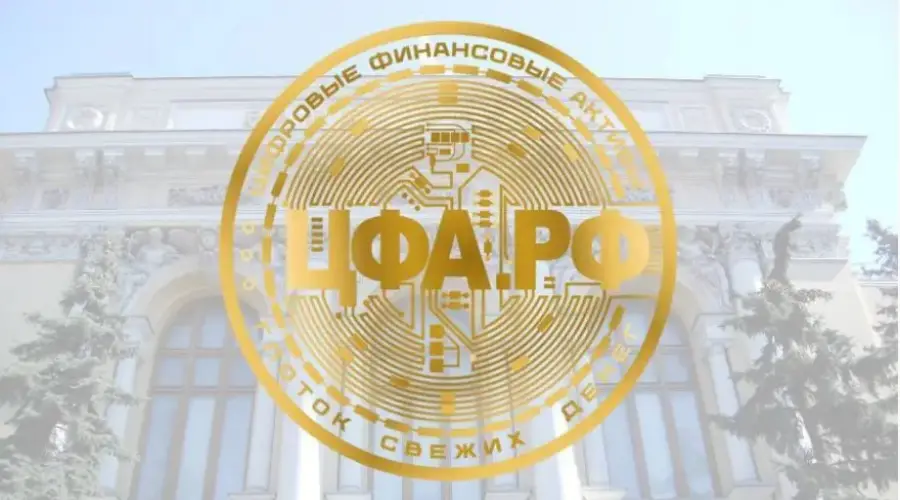- Bitpanda’s Deputy CEO expects more clarity on crypto regulation in the US, regardless of the winner of the US presidential election.
- Favorable macroeconomic conditions should support cryptocurrency markets in 2025, says executive.
- More spot ETF approvals likely despite slow start for Bitcoin and Ethereum, he says.
Lukas Enzersdorfer-Konrad is the Deputy CEO of Bitpanda, a European-based cryptocurrency exchange with over five million users. In the European Blockchain Convention Held in Barcelona, the executive shared with FXStreet his views on the current state of the cryptocurrency industry and its regulation, how the upcoming US presidential election may impact the markets, and what traders should consider when investing in cryptocurrencies.
-638629502681756718.jpg)
Lukas Enzersdorfer-Konrad. Source: Bitpanda.
Q: It has been an eventful year in the cryptocurrency market. How do you assess the market performance in 2024?
If we look at 2024 and the outlook for 2025, it has been quite macro-driven. We saw for the first time interest rate cuts by the US Federal Reserve and the European Central Bank in Europe, which will potentially continue next year. This means that money is becoming less expensive, which is a good starting point for a high-risk asset class like cryptocurrencies.
Also, with the US elections approaching, no matter who wins, we will get more clarity on how cryptocurrencies will be handled in the US. This year we still saw a lot of confusion in the US market. So these are two events that will potentially have a positive impact on crypto sentiment.
Q: What about technical developments within the cryptocurrency space?
A different aspect is that we have seen a lot of development on both Layer 1 and Layer 2 chains. Ecosystems are growing on Ethereum and Solana (SOL), so the next wave will be very interesting, with real applications and real use cases for on-chain activity that will drive Web3 as part of the next cycle.
The next US administration will bring clarity on cryptocurrencies, regardless of whether it is Trump or Harris
Q: On the US presidential election, do you see it as a binary event for cryptocurrencies? Is it a “Trump positive and Kamala negative,” or is it not so clear?
Whether it’s Kamala Harris or Donald Trump, there will be more clarity for a five-year planning cycle, which will support institutional adoption of cryptocurrencies. There may be speculation about how Trump is more pro-crypto than Harris, but this is something we won’t know until one of them is elected.
Q: What is your opinion on the current crackdown by the US Securities and Exchange Commission (SEC) on the cryptocurrency industry?
It’s very interesting to follow. There are so many different interests in the US influencing the many SEC lawsuits that go beyond what is beneficial to cryptocurrencies. It’s interesting to see the personal opinions of the people involved.
Clarity will only come after the US presidential election and with the end of all these lawsuits. So, it is only right that these legal battles are happening instead of being postponed forever.
Q: Does crypto need SEC Chairman Gary Gensler to go?
I would say yes.
The cryptocurrency market is becoming more transparent
Q: Besides more clarity in regulation, what does crypto need to bring added value and increase adoption?
For cryptocurrencies as an asset class, two things are needed: first, building Web3 interactions and on-chain applications that people start using. We are still at the beginning of this process.
The other is interaction with the real world through regulated stablecoins to have remittances, payment services and facilitators. Bitcoin is not a vehicle for payments, it is a vehicle for storing value. As with Gold, it will not be used for payment, but stablecoins will, and they are now seeing a boost in Europe with MiCA, which is a regulatory catalyst. That is a very interesting play for next year.
Q: Cryptocurrency trading is still a mysterious world compared to Forex, where the fundamentals are clearer. How can exchange platforms help traders understand what is going on?
Cryptocurrency markets are very immature and non-transparent. Still, if you think about cryptocurrencies ten or five years ago, it was a much more opaque market than it is now. From a nature perspective, Forex markets are very similar to cryptocurrencies. It’s just that FX is already optimized and has a lot more history.
There will always be some lack of transparency about why prices move. For example, we saw how Germany sold Bitcoin reserves from a lawsuit, and it was understandable. Years ago, this wouldn’t have happened because some random wallets that nobody knew about would just dump cryptocurrencies on the market.
On the other hand, it also provides opportunities for people when it comes to trading strategies, because you can still make more money with cryptocurrencies compared to FX.
Q: How does Bitpanda help traders understand what is happening in the markets?
We don’t try to tell people what to invest in. We focus on ensuring access and storage of value, making trading, custody and staking available in the best way for our customers.
What to buy and when to buy? This is something the customer must decide for themselves.
Q: If you had to give advice to a trader, what would you tell them in terms of what to watch?
If you are investing in cryptocurrencies, you are indirectly investing in the adoption of blockchain technology. So it is not just about understanding the technology and how it works, but also the use cases and what L1s and L2s are in play so you can judge whether they will gain traction. Then, invest in tokens around these ecosystems.
For trading, it is much more useful to apply old-world technical analysis, but that depends on your investment horizon.
How cryptocurrency market dynamics are changing with the entry of institutions
Q: On the approval of Bitcoin and Ethereum spot ETFs in the US, do you think these ETFs are living up to expectations?
I would say yes, absolutely. ETFs are the next step in giving a new type of investor access to the asset class, but market sentiment needs to support that as well.
You can have the best access for institutional investors, but they won’t move large amounts of capital if there are no expectations of growth. The fortunes of ETFs will be driven by macroeconomic trends: the price of money, interest rates, and also by clarity, i.e. the US elections and regulatory frameworks. We will see more inflows into ETFs in the coming years when the market is better.
Until now, geopolitical factors have mainly affected existing stock markets, but today they are also affecting cryptocurrencies. Further investments also need a positive macroeconomic outlook, and the current one is not so positive.
Q: Do you expect new ETFs to be approved in the US: Solana, XRP, etc.?
In general, yes, it will come. The question is when?
Q: When do you think this will happen?
Don’t know.
Q: How do you see the correlation between cryptocurrencies and traditional stock markets, will it grow or decouple?
With more participants from traditional markets now moving into cryptocurrencies, the correlation will increase. Not in price, but in activity. Weekday trading activity in cryptocurrencies is already much higher compared to five or seven years ago. We have fewer spikes over the weekend because retail trading activity is declining.
Q: What is your price forecast for Bitcoin in one year?
I think the price of Bitcoin will be higher in a year. Where will it be? We will see.
Source: Fx Street
I am Joshua Winder, a senior-level journalist and editor at World Stock Market. I specialize in covering news related to the stock market and economic trends. With more than 8 years of experience in this field, I have become an expert in financial reporting.







